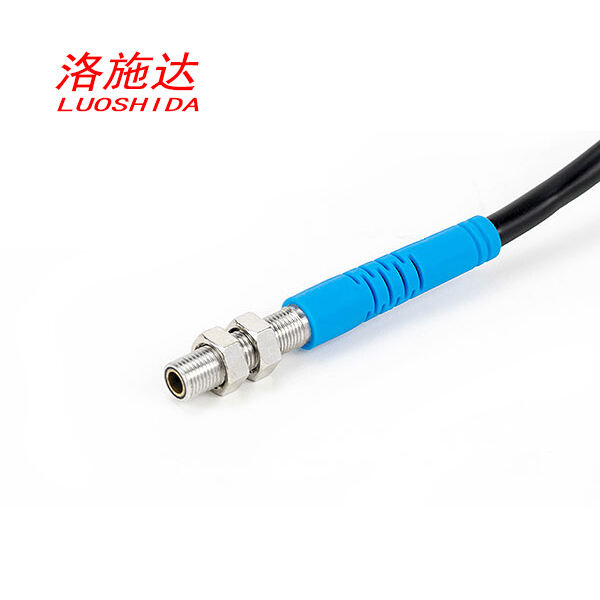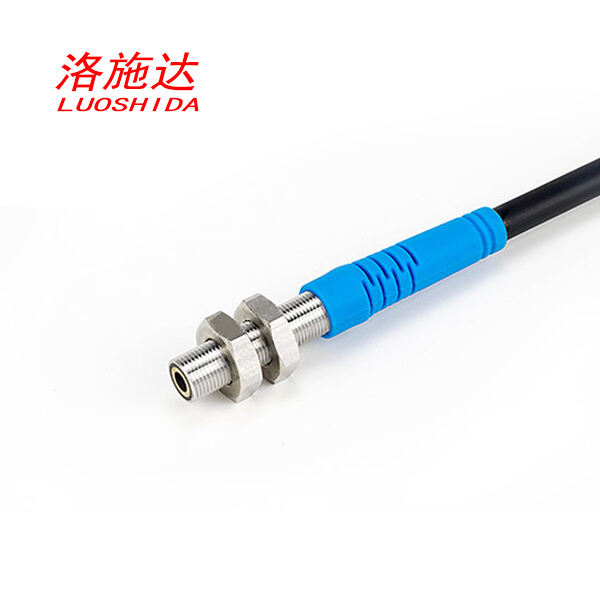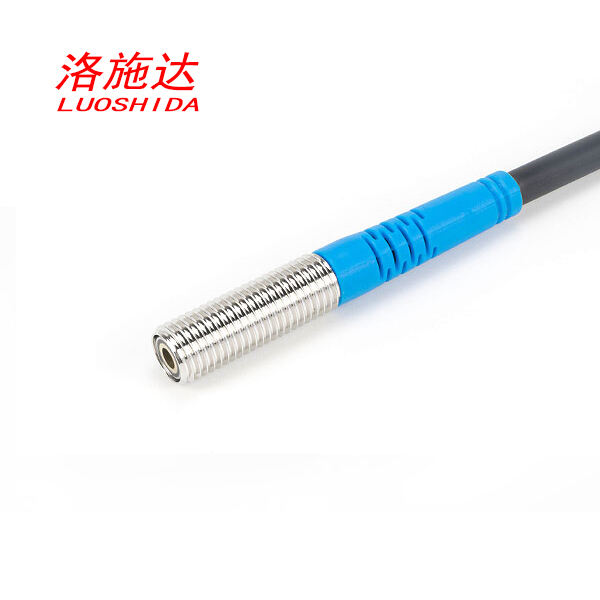Sick of inaccurate sensors? These fiber optic sensors are super reliable
Understanding Sensor Inaccuracies and Fiber Optic Advantages
Common Causes of Measurement Errors in Traditional Sensors
Traditional sensors tend to produce measurement errors from various sources like temperature changes, electromagnetic interference or EMI for short, and harsh environmental factors. Inductive proximity sensors seem especially prone to these issues, with research showing error rates sometimes hitting around 10% when conditions aren't stable. Think about what happens in factories or power plants where even small mistakes matter a lot. When sensors give wrong readings on the factory floor, whole production lines get messed up, money gets wasted, and ultimately products just aren't as good as they should be. Getting a handle on why these errors happen matters a great deal for industries that need reliable data day in and day out to keep operations running smoothly.
How Fiber Optic Sensors Overcome Environmental Limitations
Fiber optic sensors stand out because they can handle all sorts of environmental challenges that would mess up other types of sensors. Take temperature swings or electromagnetic interference, for instance these things just don't affect fiber optics much at all. Studies have actually shown that while many traditional sensors start giving unreliable readings when conditions get tough, fiber optic systems keep delivering accurate results. What's happening here? Well, these sensors work by sending light signals through glass fibers instead of electrical currents. Light doesn't get disrupted by outside factors the way electricity does, so the data stays clean and trustworthy. That's why companies in tough industries like oil drilling platforms or rail networks rely heavily on fiber optics. When workers need measurements from deep underground wells or along miles of train tracks, they want something that won't let them down no matter what Mother Nature throws at it.
Key Benefits: Precision & EMI Resistance Compared to Inductive Proximity Sensors
Fiber optic sensors have better accuracy and resist electromagnetic interference much better than old school inductive proximity sensors do. They just don't make those kinds of errors, so they give really precise measurements which makes them great for jobs where exactness matters. According to what we see from industry data, these fiber optic systems cut down on EMI problems quite a bit, which means they work reliably without issues even after years of operation. That kind of dependable performance is why more companies are switching to fiber optics for tasks where there can't be any interruptions or mistakes. Think about things like medical equipment or aircraft systems where failure isn't an option. When businesses install these sensors, they get better efficiency across operations while keeping safety standards high for all those important processes.
Core Technologies Behind Fiber Optic Sensing Accuracy
Distributed Temperature Sensing (DTS) for Thermal Stability
DTS technology works by running thin optical fibers through areas that need temperature monitoring, allowing companies to get detailed readings across long stretches of pipe or equipment. The Armstrong team found something interesting about how these systems handle humidity problems too. When manufacturers dry out the fiber connections properly during installation, they actually boost accuracy in damp environments where traditional methods struggle. We see this happening all over the place now. Oil refineries use DTS in their LNG storage tanks while chemical plants rely on it for those big outdoor storage vessels. The real advantage here goes beyond just saving money on maintenance costs. These systems catch potential hotspots before they become serious problems, which means fewer unexpected shutdowns and safer operations overall. That's why so many industrial facilities are turning to DTS when dealing with tricky temperature control situations.
Distributed Acoustic Sensing (DAS) for Vibration Analysis
DAS technology offers a fresh approach to vibration monitoring through optical fibers that run alongside infrastructure. The oil and gas sector has really put this tech to work, with pipelines now being monitored much safer and more efficiently than before according to field tests from several major operators. When something vibrates or moves unexpectedly along these lines, DAS systems pick it up fast enough to let engineers respond before problems get serious. This early warning system helps prevent leaks and keeps operations running smoothly without unexpected shutdowns. What makes DAS stand out is its ability to catch even tiny tremors that would go unnoticed by traditional methods. For instance, subtle ground movements near compressor stations can be detected long before they become actual threats, giving managers better quality information when making crucial decisions about maintenance schedules and resource allocation.
Integration with Laser Measurement Systems for Distance Calibration
When fiber optic sensors work together with laser measurement systems, they really boost what we can do with distance calibration. We see this combination at its best in places where getting things right matters most, like when building planes or running factories that demand pinpoint accuracy. Take NASA's X-56A project as one good example. There, engineers put fiber optic sensors alongside laser tech to measure how shapes change and distances shift while these test aircraft fly around. What makes this pairing so useful? Well, it gives us better accuracy overall and speeds up how fast we get our data back. That matters a lot in situations where split second decisions based on reliable numbers can mean the difference between success and failure. Looking ahead, these improvements in measuring distances accurately through lasers are giving industries across many sectors solid tools to hit those tough targets for precision work day after day.
Industry Applications of High-Accuracy Fiber Optic Sensors
Pipeline Integrity Monitoring in Oil & Gas
In the oil and gas sector, fiber optic sensors have become essential for keeping pipelines safe and functioning properly. These sensors continuously monitor things like temperature changes, pressure fluctuations, and vibration patterns along pipe walls, which means operators can spot potential problems almost instantly. The results speak for themselves too many companies report fewer leaks and spills since adopting this technology. One major refinery saw a 40% drop in maintenance costs after installing fiber optic monitoring systems last year. Real world applications show that when engineers get instant feedback from these sensors, they can respond faster to issues before small problems turn into big disasters. For pipeline operators dealing with aging infrastructure across remote locations, fiber optics represent not just a technological upgrade but a practical solution to ongoing safety challenges.
Structural Health Assessment in Civil Engineering
Civil engineers rely heavily on fiber optic sensors to keep track of how buildings and bridges hold up over time. These little devices give continuous updates about what's happening inside structures that most people can't see. Around the globe, engineers have put them into action across major construction sites where they catch problems before they become disasters. Take the London Overground rail system as one case study. Sensors embedded throughout the tracks help spot issues with stress points and vibrations long before anyone notices anything wrong. Maintenance crews get alerts when something looks off, which saves money and keeps passengers safe. Researchers are still figuring out new ways to make better sense of all this sensor data. While fiber optics aren't a magic fix for everything, their ability to provide early warnings makes them pretty essential for keeping our cities standing strong in the face of aging infrastructure.
Precision Control in Automated Manufacturing Systems
Fiber optic sensors make a big difference in automated manufacturing by improving how precisely machines control their operations, which helps keep quality standards high across the board. These sensors are really accurate and sensitive, so they let factories tweak their automation processes better than before, which boosts overall productivity. The numbers tell the story pretty clearly industries that have adopted fiber optic tech in their automation setups report major improvements in efficiency. Take the automotive industry and consumer electronics sector for instance, both places where getting quality right matters a lot. Car makers and gadget producers depend on these fiber optic sensors day in and day out to ensure products come out consistently good while cutting down on mistakes during production runs. That's why we see them everywhere now in today's manufacturing landscape.
Proven Fiber Optic Solutions: M-Series Photoelectric Sensors
M5mini: Compact Design for Space-Constrained Installations
What makes the M5mini photoelectric sensor so special? Well, it's basically tiny enough to fit anywhere but still packs serious punch when it comes to performance. At only M5 x 24mm dimensions, this little guy slips right into those cramped spaces where bigger equipment would never fit. Factory workers tell us they've installed these in spots where traditional sensors just wouldn't work because there wasn't room. And don't let the size fool anyone either. These sensors come with all sorts of cool features like adjustable detection ranges and bright LED lights that make troubleshooting a breeze. Sometimes the smallest components end up being the most important ones in the whole system.
M6mini: Enhanced Range for Industrial Automation
Designed specifically for industrial automation tasks, the M6mini photoelectric sensor boasts a detection range that works across different factory floor conditions. These sensors can detect objects at distances ranging between 150 millimeters to 200 millimeters, making them great for spotting items moving through busy production lines where things are constantly changing. What makes the M6mini stand out is how easily it fits into current automation setups without requiring major system overhauls. This flexibility means manufacturers don't have to scrap their old equipment when upgrading. Food processing plants, automotive assembly lines, and packaging facilities all rely on this sensor because it delivers consistent results even when conditions fluctuate throughout the day. For anyone looking to improve their automated processes, the M6mini offers reliable performance that stands up to real world challenges. Learn more details about the M6mini photoelectric sensor at https://www.fscwsensor.com/m6mini-photoelectric-sensor.
M8mini: Corrosion-Resistant Performance in Harsh Environments
The M8mini photoelectric sensor is built tough enough to handle some pretty rough situations thanks to its brass housing with a protective nickel plating that resists corrosion. Industries where equipment gets exposed to saltwater spray or chemical fumes find this sensor particularly useful. For instance, many shipyards rely on these sensors because they keep working even when everything else starts to degrade around them. Factory managers report that after months of exposure to industrial chemicals, their M8mini units still perform just as well as day one. Plus, the sensor comes with several important industry certifications that manufacturers look for when selecting components for critical systems. Those who need dependable sensing solutions under tough conditions might want to check out what makes the M8mini stand apart at https://www.fscwsensor.com/m8mini-photoelectric-sensor-.
Implementing Reliable Fiber Optic Systems
Best Practices for Sensor Calibration & Maintenance
Getting sensors properly calibrated and keeping them maintained makes all the difference for fiber optic systems working at their best. Most professionals agree that sticking to regular calibration intervals matters a lot, along with following those maintenance checklists recommended by folks at IEEE and similar organizations. The goal here is simple really just making sure readings stay accurate over time without drifting off track. Training technicians shouldn't be an afterthought either. When workers know what they're doing during installations or routine checks, they avoid mistakes that can wreck months of good work. A trained team spots problems early before they become big headaches, which means fewer system failures down the road and overall better performance from these sensitive optical devices.
Interpreting Data from Laser Level and Length Measurement Systems
Making sense of the numbers coming out of laser level and length measurement systems takes some pretty smart approaches if we want good results and useful information. Advanced software really helps prevent those frustrating mistakes people often make when reading data wrong or missing important stuff altogether. When these tools work alongside fiber optic systems, they just make everything run smoother from collecting data all the way through analysis. Take construction sites for instance where even small errors can cost thousands. Getting down to the nitty gritty of this data lets companies fine tune how they operate day to day. Construction managers tell me time and again that accurate readings mean fewer callbacks and happier clients in the long run.

 EN
EN
 AR
AR
 FR
FR
 DE
DE
 IT
IT
 JA
JA
 KO
KO
 PT
PT
 RU
RU
 ES
ES



